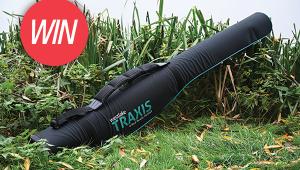Think Outside The Box…
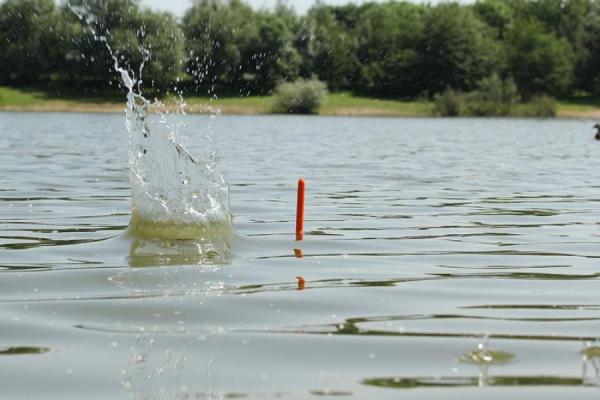
All-round master Simon Willsmore lifts the lid on his against-the-grain feeder tactics for big-water success.
If I had to say what had given me the biggest edge in match fishing over the last 10 years, it would be using my initiative to think outside the box.
I was lucky enough to live in Italy for seven years, where some very good, but also eccentric Italian anglers influenced my fishing. I also fished some very peculiar venues, and I still carry a lot of the ideas and thinking from those days with me now.
When I first moved back to England, I tried to learn the English methods again, attempting to copy the anglers that were doing well. This didn’t work for me at all, but it did teach me a big lesson. I soon started to make a conscious effort to fish how I felt was right, and although it was very different to what anglers around me did, I began to get some standout results. Since then, I’ve stuck to my guns and always tried to put my own twist on tactics and methods.
Today, you join me on the Specimen Lake at the Willows Lakes fishery near St Albans, a huge lake that holds matches, but is also heavily fished by carp anglers. It’s perfect for demonstrating one of my out-of-the-ordinary attacks!
Specimen Range
Because this lake is heavily fished by carp anglers, an awful lot of bait gets introduced at long range. Through the use of spods, big catapults and throwing sticks, fish are constantly kept at long range, normally 50 metres out or more, and while many match anglers fish closer than this, I like to be in the territory where all the bait gets introduced.
In matches, it’s often the bream that make up the majority of your weight, and because the carp anglers fish with very selective, large hook baits they rarely get caught at range. What they can do, however, is fill up on all the free offerings that get introduced.
Heavy Feeding
Watching the carp anglers, I’ve noticed they spend a long time plumbing up, even when fishing at range. They use a heavy bomb and a marker float, which slides up the line and is stopped against an adjustable stop knot.
Not only can they find out how deep it is by using this rod, they can also tell what material the bottom is made of. By using a low-stretch or braided line, you can cast the bomb around and slowly drag it back, watching the rod tip and feeling the response through it. I’ve learnt over time that they are in fact looking for glean gravel patches, which you get in many big lakes. When I fished the old Drennan Super League Final at Barston Lakes, me and the Daiwa Dorking squad used these tactics to find gravel patches, and found this was the key to catching carp on the Method feeder. If you cast on to the gravel, you caught carp!
Feel That Bottom!
Here are the different responses you get depending on what sediments the bottom of the lake consists of. It is very important to keep a tight line to the bomb as it settles, with your rod low and at a 45-degree angle, so you can clearly read the ‘touchdown’ of the bomb.
Silt: After a soft landing, the bomb may at first appear stuck, and will then slowly move, in a dragging manner. It will also feel very smooth, with no juddering on the tip.
Sand: This is like silt, but it will feel easier to pull the bomb, and there will be no sticking or drag. As the bomb hits the bottom it will land quite firmly. Again, you will feel no juddering on the tip when you pull back.
Weed: You can clearly tell if you’re fishing on weed, as the bomb landing is very soft. The bomb will catch in it, and you’ll have to pull quite firmly before it’s released, and then it will stick again if it hits more weed. If you feel this, check your bomb and swivel for bits of weed too.
Gravel: This is what you’re looking for. The bomb will land firmly, and you will feed a solid drop back. As you tighten up and slowly drag the bomb back, it will move easily and evenly, but with a juddering motion on the tip, which you can almost feel vibrating through the rod.
The Sweet Spot…
After plumbing up today, I’ve found a slightly shallower bar to fish on around 50 metres out. Here, the lake shallows up some 10 inches for around 10 metres, before it begins to slope away again at nearly 60 metres.
The touchdown of the bomb is fairly firm, and dragging back I can feel it’s smooth with no stick. There are some tiny vibrations on the tip too, and I’m certain that here I’m fishing on fine gravel on this bar. When the bomb drops closer than 50 metres I can feel it fall down off the bar, before there’s much more drag, signifying a softer bottom, which feels like sand and possibly a small amount of silt.
Plumbing up on this bar by tweaking my slider knot, I find the depth is around seven feet here. But now I’m plumbed up here, how do I go about fishing there accurately with my other rod?
My first ploy is to cast my Method feeder to the same spot. To do this, I make sure that I’m using the same reels on both my marker rod and my Method rod. Once my marker rod is in the right place, I place the line in the clip. I then slowly count the number of reel turns back until my bomb is at my rod tip. Today, it’s 61 turns of the reel.
Then, it’s a case of casting out the Method feeder to the same spot and clipping up there. This is a bit of a trial and error routine to start, but it’s easy to get right quite quickly. I cast to where I think is about right and clip up, then count the turns back to the rod tip. Today, my first cast has put me at 55 turns. I’ve stripped a rod length of line off, reclipped and repeated the process. This time I’m at 59 turns, so I’ve stripped a couple more lengths off and placed the clip on again. The next time I’m near enough on 61 turns!
The truth of the matter is, you can’t be pinpoint accurate at this distance. I know both my rods are near on 50 metres, give or take a metre.
Unconventional Feeding
My feeding tactics are not what you’d expect from a match angler, and often I’m the only angler on the bank feeding in this way.
I like to fire in balls of groundbait or soaked micro pellets that are a similar size to my loaded large Drennnan Inline Method Feeder. By regularly feeding these balls, I can get the fish used to bait going in, and build an association of noise and food.
Carp anglers often fire in large amounts of bait here, and the loud splashes of spods hitting the water are again related to feed for the fish.
At the start of the session I cast out my marker rod, and fire around a dozen balls of groundbait out, containing some micro pellets and a few dead red maggots. It is difficult to be super-accurate at this distance, and you need to find the right catapult. For this distance, I use a green Drennan Soft Groundbait catapult, which when loaded with a one-handed Method feeder-sized ball, goes around 50 metres when the elastic is fully stretched. I don’t squeeze these initial balls too hard either, as I want to them to break up quickly, create a small carpet and release the feed and smells to quickly pull fish into the swim.
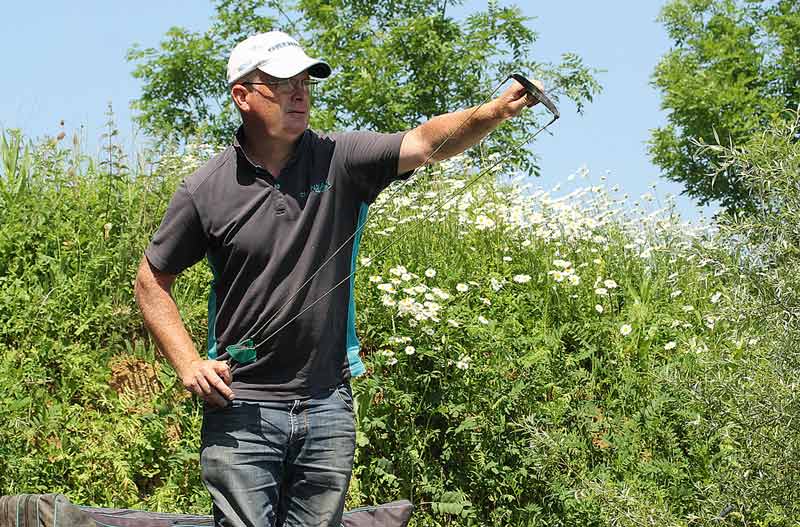
A marker float (opposite) gives a good target to aim at when groundbaiting.
Early Bites
The start of today’s session has been interesting, as I’ve had indications almost immediately. Lots of them have been small taps and rattles on the tip from small fish, and I’ve immediately caught a couple of hand-sized skimmers.
I read this as a very good sign, as it shows the initial bombardment of feed has drawn in fish; proof they come to the noise and disturbance.
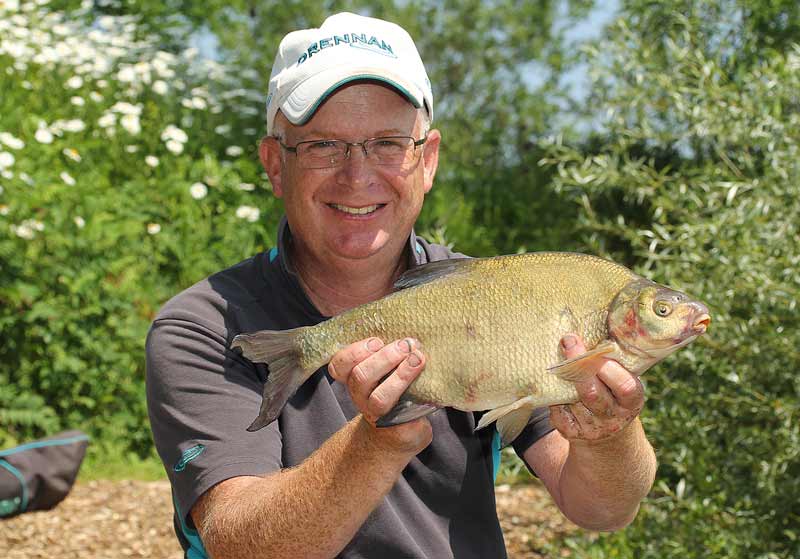
Simon with a bream that thought it was out of the range of anglers.
Non-Selective Baits
One thing that I feel is very important is that you use a non-selective hook bait. My choice is always dead red maggots – a soft hook bait that all kinds and sizes of fish love! Two, three or four dead maggots on the hook make a very light bait that will waft up into the mouths of fish very easily.
The beauty about a hook bait like this is that you will catch whatever is in your swim, whether it be a skimmer, F1, bream or 20lb carp. When small fish are there, I can pick them off, but when it goes quiet I can expect a bigger fish.
If runs of bigger fish appear and then things go totally quiet, this will prompt me to introduce more bait. If a run of smaller fish showed after the big fish, it would tell me there was still plenty of bait there, and I could be patient and wait for a run of bigger fish again.
Action
After around 30 minutes, bites from small fish slow and I get a steady pull around and the first bream is on, a lovely fish around 3lb. In a 15-minute spell, I manage to catch four. This is often the case with bream, when a pod of them move in and has a graze.
You seem to catch a few before the disturbance spooks them and the smaller fish return. I’m hesitating to re-feed just yet, and after a 15-minute spell of indications and an odd smaller skimmer, two more bream hit the net.
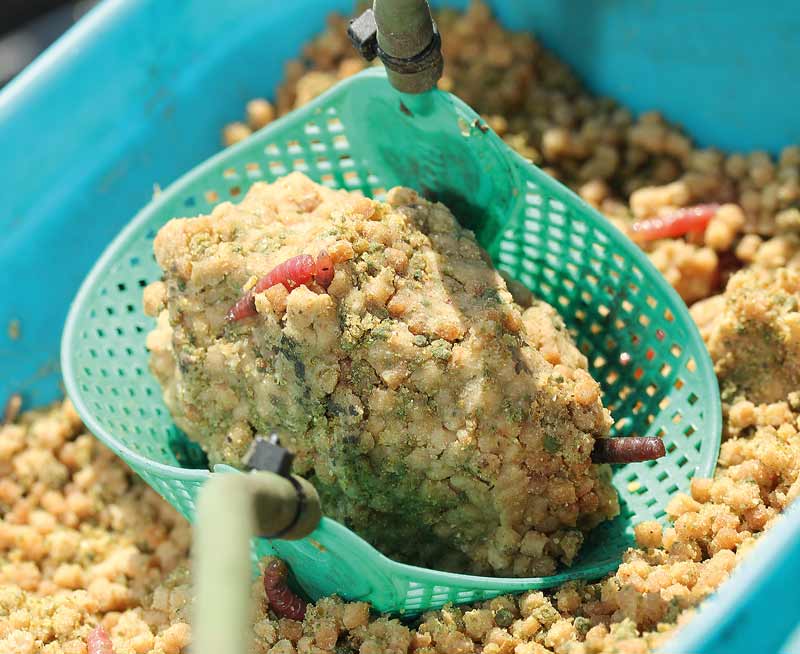
Simon’s groundbait balls were about the same size as his loaded Method feeders.
The Top-Up
Suddenly, the swim seems devoid of life. The small fish have disappeared, and in 10 minutes I haven’t had a liner or anything. This prompts me to give the swim a top-up, and after casting my marker float back out I make up three balls of groundbait, and three of softened micro pellets.
Now that I know there’s an odd bigger fish kicking around, I’m happy to feed some more pellets, and feel these will hold some bigger fish for a little longer.
A couple of minutes after feeding, I get a liner, and I’m soon winding another big skimmer back. After feeding this time, action is much steadier, and after two fish I feed another ball, to try and maintain some feed in the area to stop the fish backing off.
The regular feed certainly hasn’t put off the fish, and if anything I’m getting bites quicker by feeding regularly. On other days, feeding three or four balls then fishing for a period may work better. After a quiet spell the sudden disturbance and crashing of three or four balls into the swim can draw in more fish.
In a match, when there’s a line of angers all doing the same, tactics like this really can help you win the fish. Breaking the mould, thinking outside the box and taking a leaf out of other angling areas, such as carp fishing, has helped me a lot, and can certainly help you.
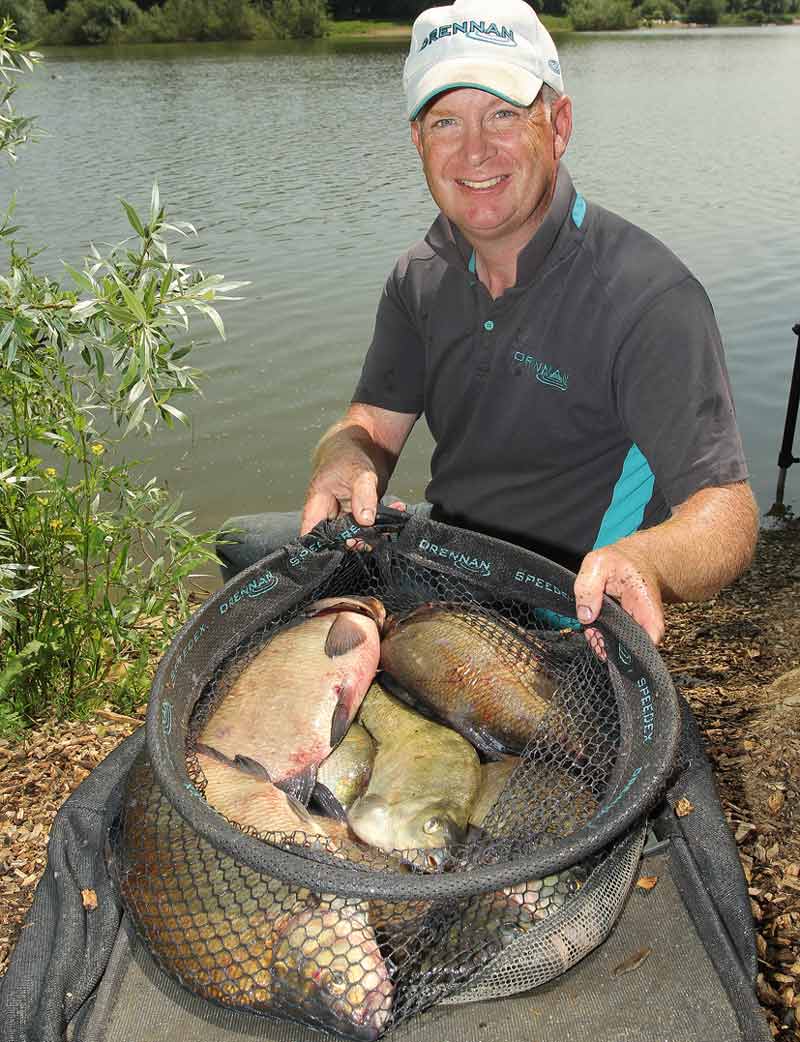
Try thinking a little differently on your next match!
Like what you see?
Or buy a single issue
- Log in or register to post comments









